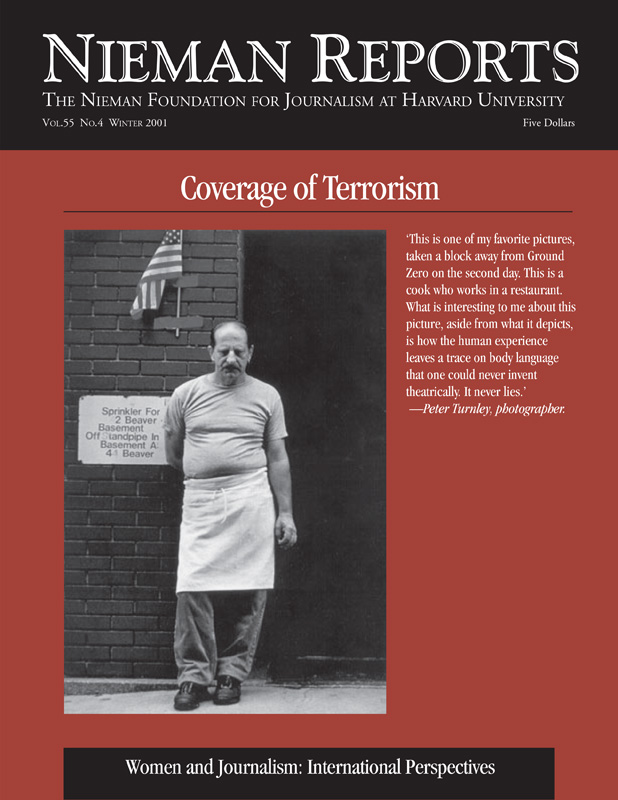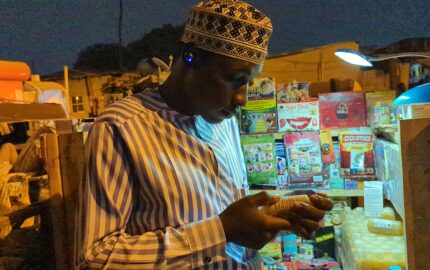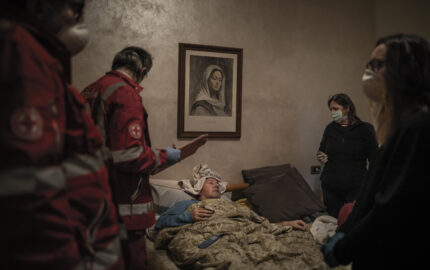
Our opening writer, Margaret Gallagher, whose research focuses on gender and the media, reminds us, “Wherever one looks in the world, women still have little decision-making power either inside the media organizations themselves, or in the political and economic institutions with which these organizations must interface. This is one of the reasons why female journalists—even when they are a majority within the profession—remain highly vulnerable….”
Some journalists, like Worldwoman editor Lesley Riddoch, leave publications where stories about women do not receive adequate coverage. Riddoch writes about her online news service, written for and about women, and about the virtual newsroom pilot project she uses to train women journalists in Africa. From Africa, Christine Anyanwu, chief executive of Spectrum Broadcasting Company of Nigeria, describes the situation in Nigeria and sheds light on why efforts like Riddoch’s are necessary. “The definition of news, what makes news, real marketable news in Nigeria inevitably excludes a sizeable chunk of the population, especially women.” In South Africa, Pippa Green is one of three women editors in the country in her job as associate deputy editor of the Financial Mail in Johannesburg. Green’s story illuminates a debate about why (and whether) the absence of women in leadership positions matters. Two African women, L. Muthoni Wanyeki and Lettie Longwe, who oversee programs that train rural women to tell stories at community radio stations, explain radio’s vital role in communicating news about women’s lives and its potential as a force for societal change.
Teresita Hermano and Anna Turley share results from the Global Media Monitoring Project 2000, a worldwide survey of women’s presence and portrayal in the news, done by the World Association for Christian Communication, with which they work. Peggy Simpson, a freelance writer living in Poland, writes about Agora, one of Europe’s newest media empires that is owned and run by women. Ratih Hardjono recalls her decade-long experience while reporting on war and conflict for Kompas, an Indonesian daily. “In the coverage of war, it is stories about women’s lives that often go untold,” she writes, and then describes her efforts to change that situation. These women’s stories, she contends, “are so very different than men’s, and necessary to hear if we are to understand the consequences of war.”
From India, Ammu Joseph, author of “Women in Journalism: Making News,” observes how women report alongside men but their impact (on coverage of news) can be difficult to discern. Indian author and journalist Sakuntala Narasimhan finds her nation’s culture combining with business decisions to leave many women’s stories untold. Visibility of women in the media, she writes, “does not necessarily translate into gender equity in terms of the content of what goes on the pages.” After working for 18 years at two of India’s largest newspapers, Angana Parekh directs the Women’s Feature Service, which provides access to stories about women’s lives. Her goal: “to create ‘space’ for women’s voices and experiences in mainstream media, where such topics don’t usually receive this same kind of attention.” From Pakistan, Massoud Ansari, a senior reporter for Newsline in Karachi and contributor to Women’s Feature Service, demonstrates how journalists, through their coverage of news, maintain women’s lesser cultural status.
By turning the camera’s eye on their own lives, women in rural China created a collection of photographs called Visual Voices which were, in turn, used to generate discussion about aspects of their daily lives. Similarly, women’s photographs taken in Cape Town, South Africa, as part of a project called Through Her Eyes, accompany our coverage of Africa.
Surveys of women journalists done by the International Federation of Journalists (IFJ) show the varied pace of progress in different regions of the world, according to Bettina Peters, a director at IFJ. From Chile, Veronica Lopez argues women bring “a certain look, a certain feeling” to news coverage, and what they bring is what the public now wants. Blanca Rosales, a Peruvian media consultant, describes what she learns from listening to women journalists discuss their situations. Sadly, she reports that women who’ve reached top positions “don’t feel the obligation to be trailblazers for other women.” Colombian journalist María Cristina Caballero, who demonstrated great courage in reporting on her nation’s war and reached top positions at her newspaper, recently turned her attention to helping other women journalists as she became interested in “exploring the causes of the gender inequalities in the media workplace and in seeking ways to possibly overcome these situations.”
For more than 25 years, as a journalist, editor and analyst, Naomi Sakr has covered the Arab world. Using findings from her 2000 report, “Women’s Rights and the Arab Media,” Sakr describes the tough roads women there must travel to break down barriers to their progress. Photographs by German newspaper photographer Katharina Eglau accompany Sakr’s story and that of Iranian-American Naghmeh Sohrabi, who explains how important stories about women’s lives are submerged by inaccurate assumptions, particularly regarding the wearing of a veil. It is, she writes, “rare to read a news report about the social and cultural situation in Iran without a mention of veiled women.” And, in these stories, “a veil is used to either demonstrate a person’s conservative viewpoint or to show the opposite—that despite the veil, a woman holds views close to our own more liberal, democratic ones.” She offers four timely suggestions to journalists that can be applied to improving coverage of women throughout the Muslim world.
In our next issue of Nieman Reports, women journalists who work in the United States will address issues related to these same questions.


